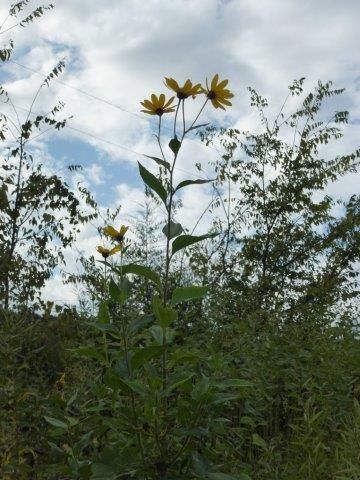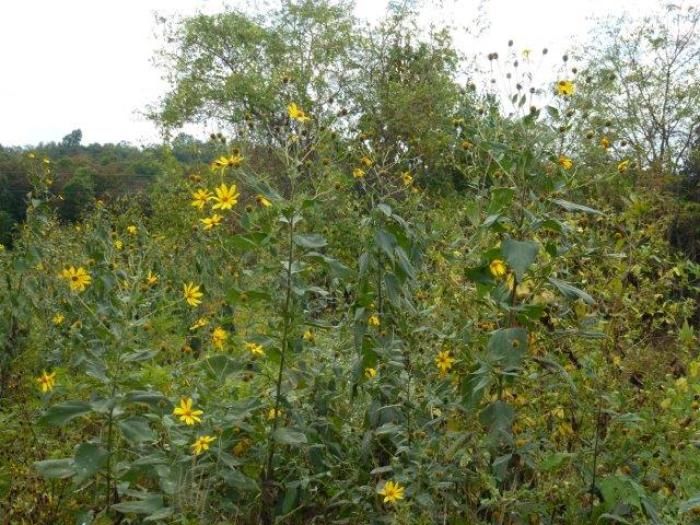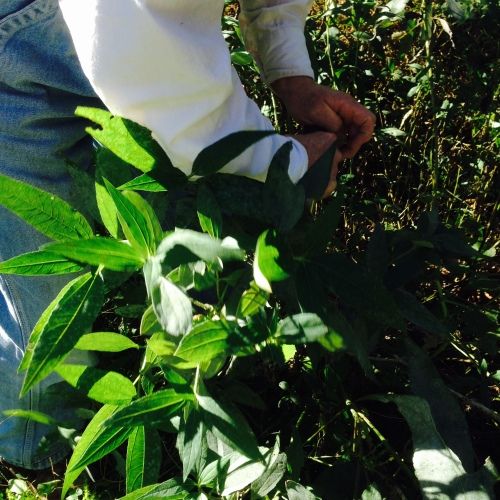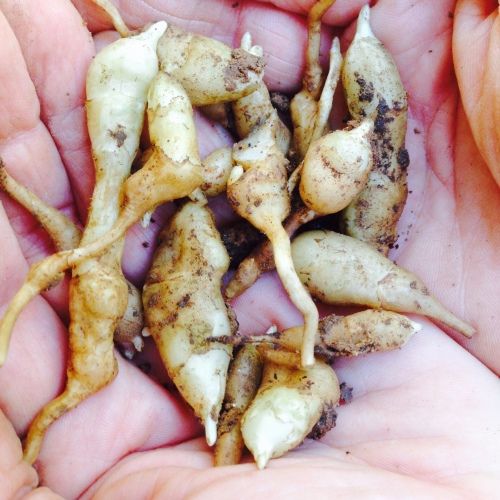
Jerusalem artichokes (Helianthus tuberosus), also referred to as sunchokes, sunroots and earth apples are edible tubers native to North America, mainly the Eastern regions. They are not from Jerusalem–the name is believed to have derived from the Italian name for sunflower girasole, which means “turns with the sun”. They are also not an artichoke, rather a member of the daisy family. Native Americans harvested the tubers for food and early explorers took them back to Europe, first to France, where they were prized as a root vegetable.
They are a member of the sunflower family and their bright yellow flowers appear on roadsides and in fields in late summer to early fall. Plants reach anywhere from about 5 to 8 or 9 feet in height, with narrow, upper leaves growing opposite and much larger, lower leaves grow alternately. Once the flowers fade, the foliage will start to turn brown with cooler weather; note where they are so you can dig them after the first frost. While waiting for frost isn’t absolutely necessary, the tubers turn nutty sweet with a frost.
You can grow your own–see if a gardener you know has any–and they will be glad to share the tubers with you. However be forwarned that every little tuber will make a plant and they can take over and become a weed-like invasive if the gardener is not diligent to dig and harvest every season. Put them on the outskirts of a garden or in a place you won’t mind if they spread. They prefer a loamy soil, however can grow in denser soils, however the tubers won’t get as large. Tubers can be anywhere from about 2- to 4-inches in length and they look sort of like small, nubby, gingerroots, usually a little whiter in color, once the dirt is washed away, and sometimes they have a slight purple or pink tinge.
I like sunchokes the best freshly harvested and thinly sliced, eaten raw. They can be added to salads or used as crudites for dips, or grate them into a slaw. They have a crunchy texture when raw, which changes when cooked. They make a mild, yet tasty soup with a hint of nuttiness and not a lot of starch. They get sort of soggy if boiled, so it is best to saute them quickly or steam them. They are a good source of fiber, are high in potassium and have some iron and are about 10% protein and a large part inulin, which is a carbohydrate. If stored for any length of time the inulin turns into fructose, thus they have have a sweetness to them.
Once you harvest the tubers, brush off most of the dirt and then rinse them and scrub lightly with a vegetable brush. Let them dry and store them in the fridge in an unsealed bag in the crisper drawer. They are best eaten as soon as possible, however will hold for a few weeks–you want them to be crisp not limp, so use them while they are fresh.
























Comments
Log in or create an account to post a comment.
Sign up Log in